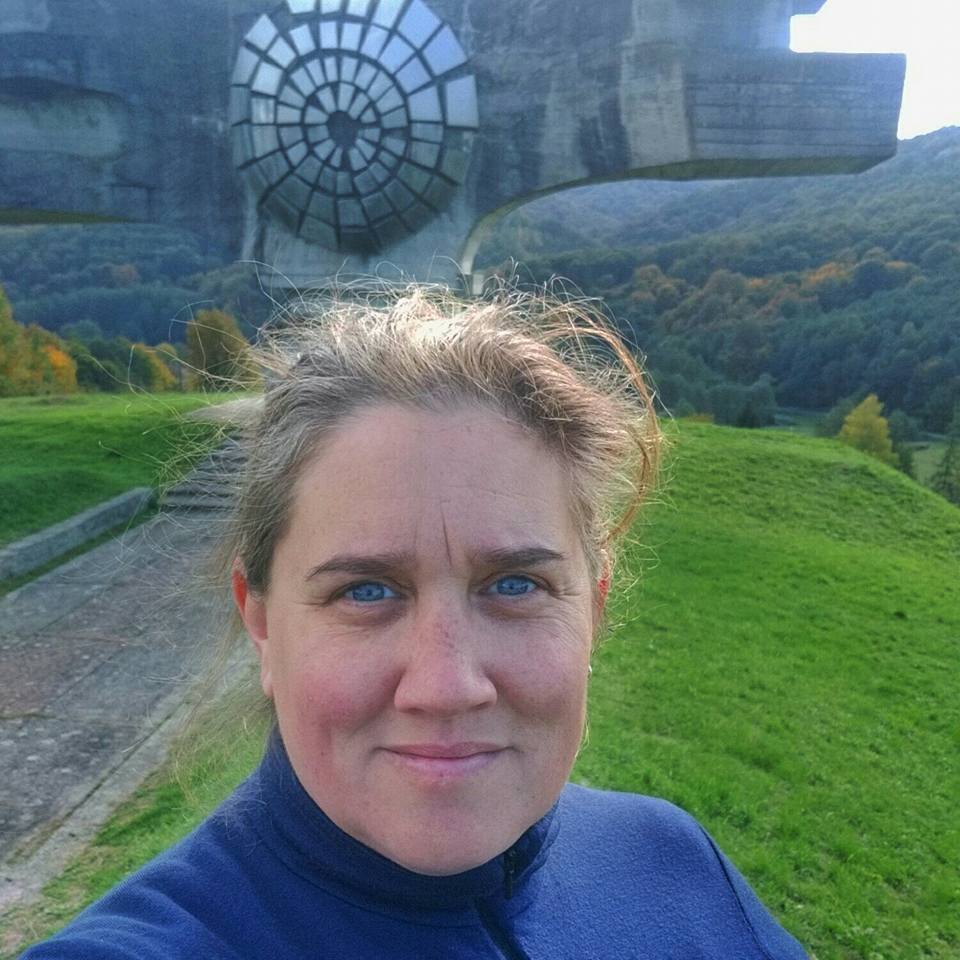
I’m super excited to be showing again at 42 Maple Contemporary Art Center, in Bethlehem, New Hampshire. The work will be up July 7-31st, 2017
Artist Statement:
It was Proust who so succinctly, elegantly even outlined, essentially, three types of memory:
The subjective. Memory that is intentionally or willfully recalled.
The collective. Memories one “subjectively” remembers but did not necessarily experience.
The involuntary. Memory that is provoked or maybe invoked by something.
The images in this show represent of but a handful of the monuments in the former Yugoslavia. And the hundred or so still remaining are but a fraction of the thousands created in the era following WWII.
Spomenik is the word for “monument” in the language(s) of Yugoslavia. The root of the word, “spomen,” means “memory.”
The first and probably most important thing to understand about the spomenici (plural of spomenik) is that like most everything in this region, they have different meanings for different people. To some they are the indication of triumph over tyranny and suffering and one of the last symbols of a time gone by. The tangible demonstration of the ideology of hope in the future. To others they are the focus of resentment or revisionism. For as many monuments as exist there differing ideas, feelings, reasons as to their existence. That’s where Proust’s idea of memory comes in…these monuments are looked at differently exactly because of the versions of memory the viewer is invoking.
What is incontrovertible is that they are a series of memorials built from the 1960s-1980s during Tito’s Republic of Yugoslavia. Their primary intent was to honor the people who died between 1941-1945 fighting in what was called in the region the National Liberation War. What we refer to as World War II.
In my early research and preparation to travel in the former Yugoslavia for what would become my ongoing cheese project, I became aware of these crazy, oversized, sculptural monuments that supposedly dotted the countryside where I would be traveling. I needed to know more but English language resources were scarce and available photographs were limited to work from a single monograph by a Belgian Photographer.
Fast-forward to spring 2015, I’m on the road in the region, driving to far flung villages, interviewing individuals about cheese & tradition and trying to coordinate my itinerary to take me past some of these spomenici. Upon visiting the first one I was awe struck, dumbfounded, overwhelmed. The photos I’d seen provided no context or scale or framework to comprehend what I was seeing. In fact it seemed the photos intentionally decontextualized them and in a region where context is everything. That spring I photographed several of the monuments and in the half a dozen visits to the region since I have visited and photographed more of them and revisited some of my favorites.
The work in this show is my effort to contextualize and comprehend the uniquely Yugoslav space these monuments occupy, specifically through the lens of memory. It is also an attempt to understand what it is to have monuments to fighters for a country, an ideology, that no longer exists. By looking at the monuments from a literal “different perspective,” that is, not the one the designers/artists/architects intended, I am seeing them in “a different light” and hopefully invoking a different kind of memory.




